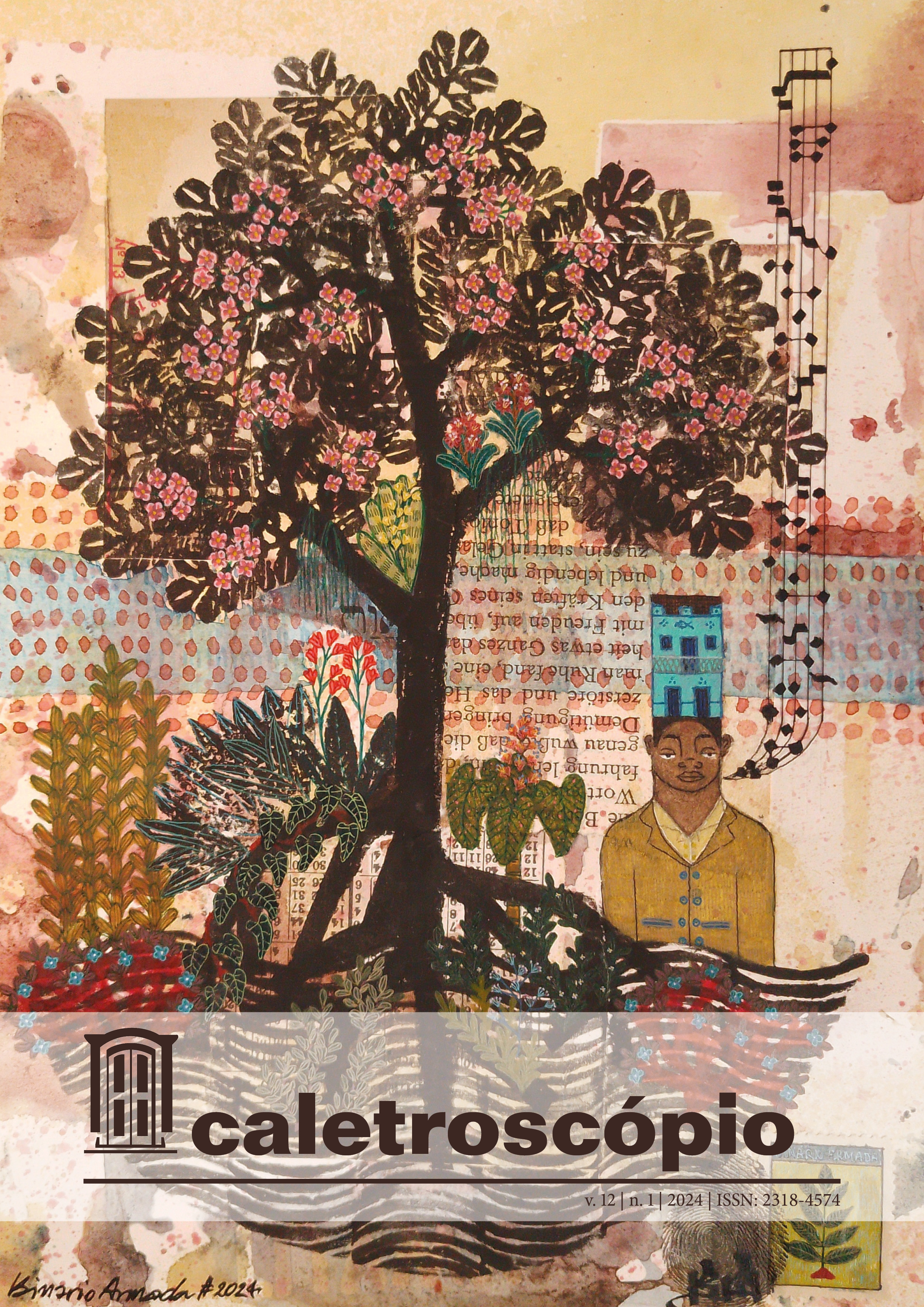Between history, fiction and intertextuality: The novel “Sede”, by Amélie Nothomb
O romance Sede, de Amélie Nothomb
Abstract
In Sede (2021), a novel by Amélie Nothomb, Jesus narrates his last days on Earth as someone who shares human sensations and feelings, but who is also endowed with superhuman powers. These attributes allowed us to cover this character from both a historical and fictional perspective, nearing these aspects. Historically, we glimpse an individual who lived in Galilee, followed by many and later sentenced to death. As for fictionality, the
character's anachronistic quotes aroused our interest in an analysis that would make it possible to understand the interlacings and dialogues between such intertexts and the main narrative. Thus, we selected three intertextual examples, which we classified into three axes: literary, religious, and philosophical. Studying intertextuality through this novel allowed us to glimpse similarities between history and fiction surrounding an ancient character like Jesus, helping us understand the possibility of rewriting the past in a constantly changing and (re)constructing present.
Downloads
References
AMANIEUX, Laureline. Amour, meurtre et langage dans l'oeuvre d'Amélie Nothomb. L'Esprit Créateur, v.45, n.1, p.79-86, 2005.
BAINBRIGGE, Susan. Identité, Altérité et Intertextualité dans l'écriture de Neel Doff, Dominique Rolin, Jacqueline Harpman et Amélie Nothomb. Nouvelles études francophones, v.19, n.2, p.31-42, 2004.
BISHOP, Morris. Pascal: The life of genius. New York: Reynal & Hitchcock, 1936.
CHEVITARESE, André Leonardo; FUNARI, Pedro Paulo A. Jesus Histórico. Uma brevíssima introdução. Rio de Janeiro: Klíne, 2012.
COHEN, John Michael. Introdução. In: D’ÁVILA, Santa Teresa. O livro da vida. São Paulo: Penguin Classics Companhia das Letras, 2010.
COMPAGNON, Antoine. O trabalho da citação. Tradução: Cleonice P. B. Mourão. Belo Horizonte: Editora UFMG, 1996. 176p.
D’ÁVILA, Santa Teresa. O livro da vida. Tradução: Carmelitas Descalças do Convento de Santa Teresa do Rio de Janeiro. Petrópolis: Editora Vozes, 1961. 366p.
HUTCHEON, Linda. Poética do pós-modernismo: história, teoria, ficção. Rio de Janeiro, Imago, 1991. 330p.
KHELIL, Amélie. Amélie Nothomb ou l’aménité notoire : le périple d’une lecture plurielle, Cahiers de Narratologie, v.10, n.2, p.116-128, 2001.
LOPEZ, Telê Ancona. A criação literária na biblioteca do escritor. In: Ciência e Cultura. São Paulo, v.59, n.1, p.33-37, 2007. Disponível em: http://cienciaecultura.bvs.br/scielo. php?script=sci_arttext&pid=S0009-67252007000100016&lng=pt&nrm=iso. Acesso em: 15 jan. 2024
NOTHOMB, Amélie. Sede. Tradução: Gisela Bergonzoni. São Paulo: Planeta, 2021. 128p.
______. Soif. Paris: Éditions Albin Michel, 2019. 160p.
NOTHOMB, Amélie; SAVIGNEAU, Josyane. Écrire, écrire, pourquoi? Amélie Nothomb : Entretien avec Josyane Savigneau. Paris : Éditions de la Bibliothèque publique d’information, 2010 .27p.
PASCAL, Blaise. Pensées. Paris:Léon Brunschvicg, 1897. 258p.
SAKA, Paul. Pascal's Wager About God. The Internet Encyclopedia of Philosophy, ISSN 2161-0002. Disponível em: https://iep.utm.edu/pasc-wag/. Acesso em 12 jan. 2024.
SAMOYAULT, Tiphaine. A intertextualidade. Tradução: Sandra Nitrini. São Paulo:Hucitec, 2008. 160p.
VALÉRY, Paul. L'idée Fixe ou Deux Hommes à la Mer. Paris: Les Laboratoires Martinez, 1932. 131p.
VERSTICHEL-BOULANGER, Eolia. Le processus scriptural nothombien: une identité hybride. HYBRIDA, v.2, p.143-59, 2021. Disponível em: https://doi.org/10.7203/HYBRIDA.2.20637 Acesso em 20 jan. 2024.
WHITE, Hayden. O texto histórico como artefato literário. In: ______Trópicos do Discurso: Ensaios sobre a crítica da Cultura. São Paulo: Edusp, 1994. p.97-116.
Copyright (c) 2024 Caletroscópio

This work is licensed under a Creative Commons Attribution-NonCommercial-NoDerivatives 4.0 International License.
The publication Caletroscopio shall retain for a period of three years all authorial rights for works accepted for publication: articles, reviews, translations, etc. Outside this restriction, these works are licenced through Licença Creative Commons-Atribuição-NãoComercial-SemDerivações 4.0 Internacional.
Upon expiry of this period, in the event that the author publishes the text, even when making alterations to the original, we would ask authors to include as a footnote, the information that a previous version of the article was published in the Revista Caletroscópio, citing the appropriate references.


